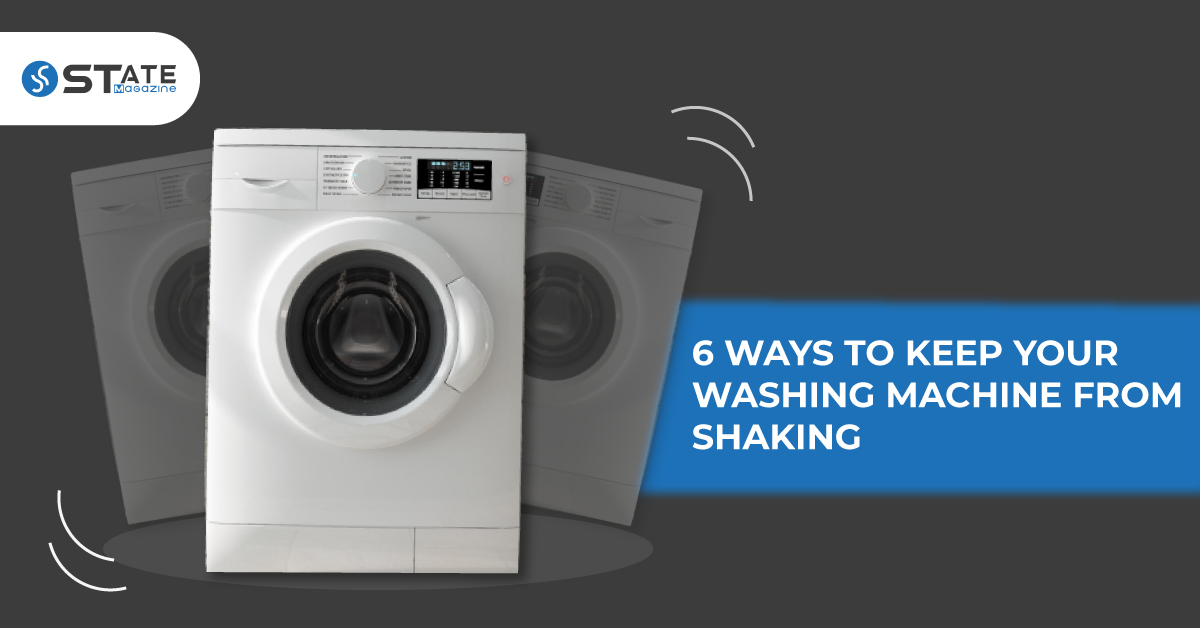It isn’t very pleasant when the washing machine shakes while spinning as it vibrates all other appliances and walls nearby. It might also be noisy and cause disturbance to your daily activities. Since a washer should not be too loud and vibrate, it is necessary to be concerned.
Furthermore, an unattended shaking washer might lead to more damage to its components. There are certain reasons behind this effect, and you can easily solve this issue with simple remedies. The basic adjustments can even be made by a non-professional after going through the steps indicated here.
If you encounter any problem that you cannot troubleshoot, get your appliance repair technician to handle it. Always make sure to unplug your washer from power before you carry out any inspection or repair. Use safety goggles and gloves to minimize the risk of personal injury.
1. Balance the Load
Contents
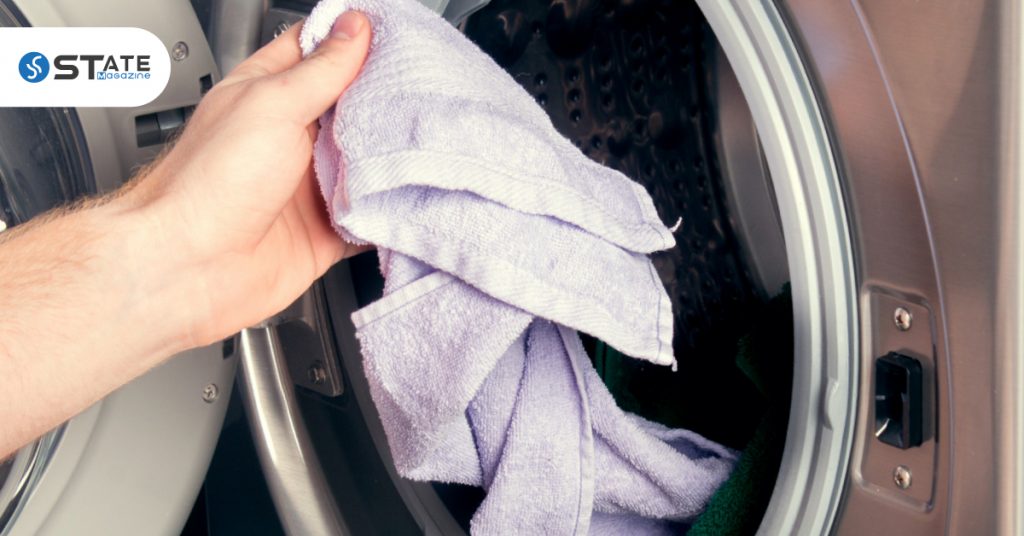
If your washer shakes during a cycle, it might be due to an unbalanced load. Significantly, the top-loading washing machine shakes when it runs in this condition. However, the front-loading washers also need a relatively balanced load to spin evenly without shaking. Otherwise, it would shake the entire washing machine, and the drum will start bumping inside. You can get rid of this issue by using the following methods.
Move The Clothes Around The Middle
Washing machines often shake due to the uneven distribution of clothes inside them. If your washing machine shakes during a spin cycle, pause the washing machine and open the door to inspect the arrangement of clothes. If it is an uneven pile, it would be bundled into a ball. To avoid this, you can spread your clothes out and resume your spin cycle. The best option is to spread out the clothes throughout your washer when loading.
Use Smaller Loads Of Clothes
Filling the drum with too many clothes might also be a reason why your washing machine is shaking. Clothes should be loaded only until the drum is half-full, leaving enough room for the clothes to move when spinning. In a front-loading machine, the clothes should be piled up higher towards the back of the drum, leaving space near the door. Front-loading machines have difficulty in distributing clothes, while top-loading machines can handle more clothing. Check the prices of top loading washers here.
Try Rocking The Machine To See If It Tilts
Try shaking your washing machine from the top to check whether it is wobbly even when it isn’t spinning. If so, then try changing the location by moving it to a more evenly leveled floor. If there is an issue with your floor, then your dryer might also be unleveled and have issues. So try sliding a sheet of plywood underneath the washer and dryer.
2. Level The Feet
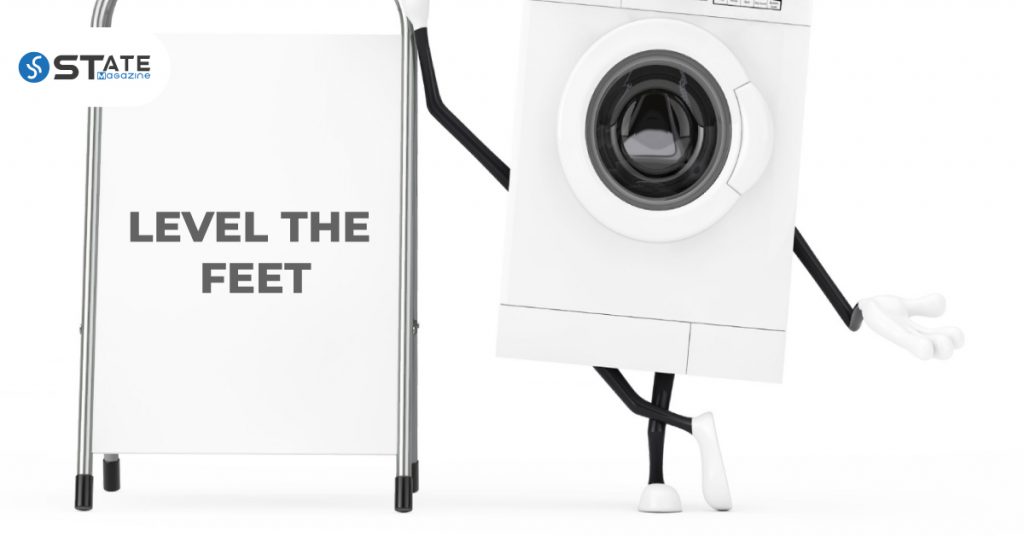
One of the main reasons for your washing machine shaking is that it is not leveled. Most appliances with moving parts rely on the floor level to function properly. So if your washer is not leveled correctly, it would result in washing machine vibration when spinning. Here are some ways to identify this issue and to get rid of them.
Place A Spirit Level On Your Washer Near The Front
Check the leveling of your washing machine by placing a spirit level on the top of your washer towards the front end. Check the side it tilts by examining the bubble on it. If the bubble is biased towards a certain side, then that side is higher than the other. So adjust the shorter leg to match the height of the other.
Put A Block Of Wood Under The Washer
For this, turn off the electricity to your washing machine, shut the water lines, and unplug the machine. Pull it out from the wall for about 2 – 3 feet to have more room around it. Slide a block of wood under the front legs of the machine by slightly tilting it off the floor. Now release it slowly so that it gently rests on the wooden block.
If this isn’t as stable as expected, you can try another block on the first to distribute the weight more evenly. If you do not have a block of wood, you can try using a brick or any similar solid object. You can also use a custom washing machine stand which will make the job much easier.

Adjust The Legs With A Wrench
You can use a wrench or channel locks to adjust the higher leg. Loosen the bolt on the top of the leg by rotating it counterclockwise. Raise the leg by turning the base of the leg clockwise.
Tighten The Bolts To Lock The Legs
You can use a wrench or channel locks to turn the bolt above the base of the leg. Rotate it until it is tight against the base of the washing machine. The leg will be locked, and it would not move when lowered. The latest models do not use a locking bolt, and instead, the leg is adjusted by turning it. Lower the legs and check to check the level again to determine the correct level when the legs are even. You can either measure each leg with a measuring tape or visually determine the level.
Check The Spirit Level Again
Slide-out the wooden block slowly and lower the machine again. Place the level on the top again and check the air bubble. If it is leveled, try shaking or wobbling your machine, and if it doesn’t move, you have leveled the machine successfully. But if it shakes, then you have to adjust the back legs.
Check The Back Levels With A Spirit Level On The Control Panel
Since most modern washing machines have self-leveling legs at the back, it is not necessary to level them. However, if your washer is about 10 years old, then you might have to adjust it manually. Check the level of the back legs by placing the level on the control level at the back. If they are in level, tap each leg with your wrench to remove any dust or debris stuck in the self-leveling joints. If the control panel is round or angled, you won’t be able to place the level on it. Instead, you need to place the level directly in front of it.
Follow The Same Procedure To Adjust The Back Legs
Adjust the back legs by following the same procedure as you did for the front legs. You can determine which leg is higher using a level and lift the machine by placing a wood block under it. Adjust the higher leg to make it lower using the same use of tools.
Use Self-leveling Support
You can identify whether your back legs are self-adjusting if you tilt your machine slightly. If you find that your back legs are not adjustable even when it has self-leveling support, then there must be rust or debris built up on the legs, which hinders the movement. Shake off the rust by tapping the exposed legs with the back of your channel locks. You can also spray hinge lubricant to the legs near the connection to the frame and wipe off the excess after application.
Try Running An Empty Cycle To Test
Lower the machine by removing the wooden blocks and slide them back to the initial position close to the wall. Run the machine empty, and if you don’t find your washer shaking, then you have leveled it successfully. If your washing machine continues to shake, then you might have to consider another remedy to get rid of this.
3. Check The Pump Filter
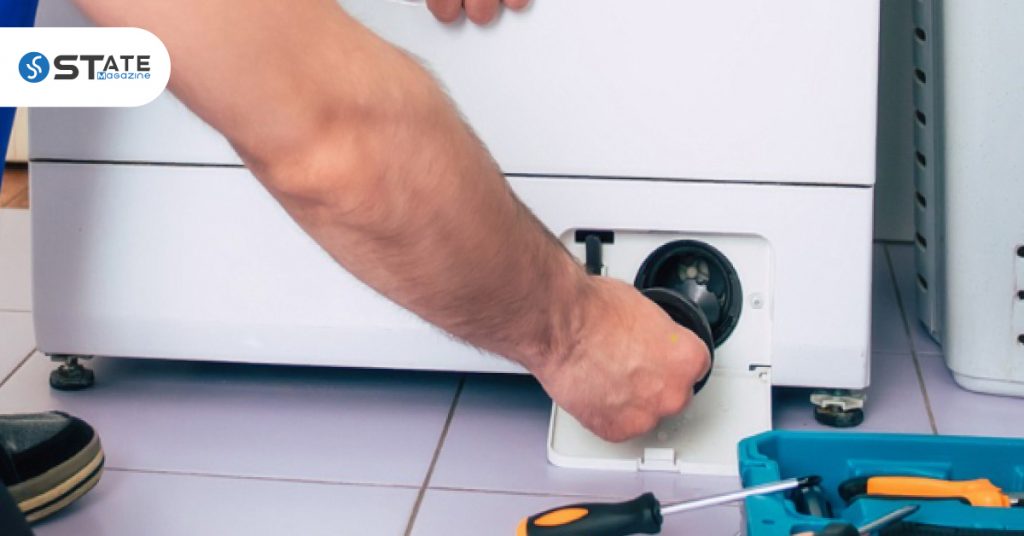
There is a possibility that your top-loading washing machine shakes due to hard items stuck inside the pump filter. The filter is located at the bottom right corner of the washing machine and prevents any items from clogging the drain hose. So you can clean this by opening the cover and exposing the filter inside. Some models have a small hose at the back of the cover to remove any water inside the filter.
Since some models might not have this, it is recommended to place a bowl and towels under the filter as water might discharge when pulling out the filter. If a hose is visible, pull it out and let the water discharge. Then rotate the filter counterclockwise and pull it out. Clean the filter thoroughly by rinsing it under the tap and remove any debris captured in it. Inspect the filter cavity and clean it using a damp cloth. Replace the filter by turning it clockwise and secure it firmly. Place back the cover and check whether your problem has been solved.
4. Remove Shipping Bolts
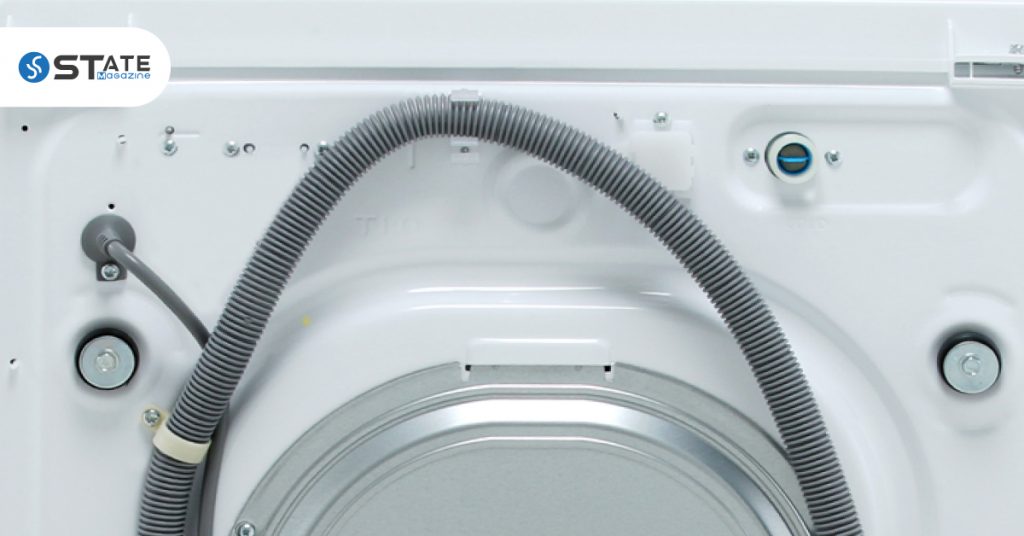
Another reason that your washing machine shakes during operation is due to shipping bolts. These shipping bolts are chunky plastic bolts used to prevent any movement of the drum during delivery and installation. They also protect the drum and inner components when the machine is not in use for a long time. They should be removed after installation before using the washing machine. So, if they are left inside, the washing machine would shake.
Look For Shipping Bolts Of A New Washer
Check for any shipping bolts on the back or at the bottom of the new washing machine. If it’s a front loader, open the door and try to press down the bottom of the drum. If it doesn’t move, then the delivery crew has not removed the shipping bolts. The shipping bolts may be located at the back panel, and you can check this out by lifting the back panel. It would simply slide out, and you can check whether there are any pieces of plastic attached to the washer drum.
Remove The Shipping Bolts
You can easily identify the shipping bolts as they are in bright colors and made from cheap plastic. You can remove the shipping bolts with your hand by squeezing the handle and pulling them off. If it doesn’t work, they must be screwed into the panel. You would have to place a wrench over the bolt, rotate counterclockwise, and remove them.
5. Pad The Sides
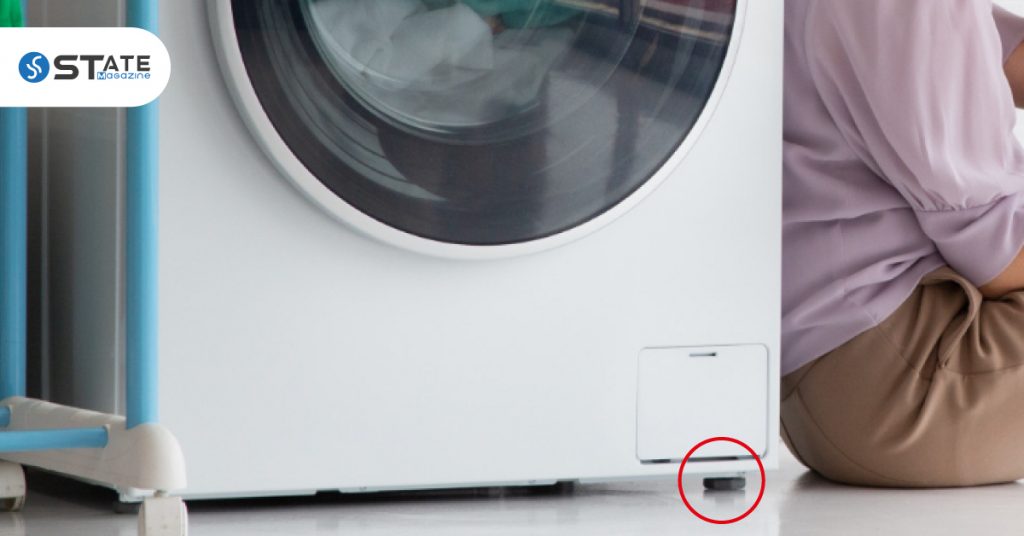
Sometimes, it is normal that your washing machine shakes slightly, and there’s nothing particularly wrong. Especially during high-speed spin cycles, the washers tend to wiggle a small amount as the drum spins. Although this can be considered normal, it can also be unpleasantly noisy and even shake the nearby objects. As a remedy for this, applying pads or padding to the sides of washing machines is done to reduce the sound and effect of washer vibrations.
These special anti-vibration pads designed for washing machines and other similar appliances can be applied in various ways. There are anti-walking pads that are placed under the feet to prevent a vibrating washing machine from moving out of place. Rectangular stick-on pads are applied to the sides of your washing machine to reduce the amount that your washing machine vibrates. These pads are similar to acoustic panels and prevent any shaking caused to other nearby or appliances.
6. Replace the Shock Absorbers
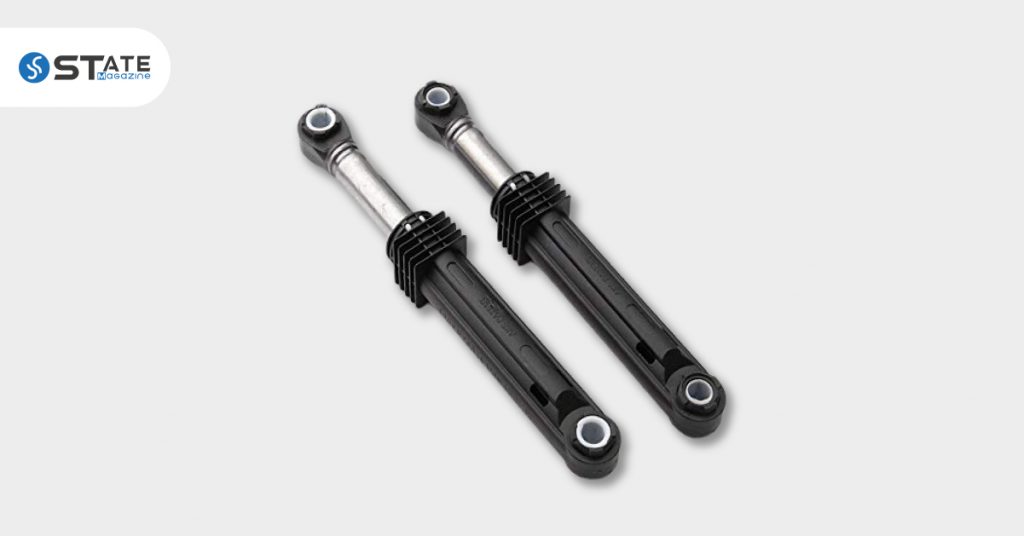
The last possible reason for a washer shaking is defective shock absorbers. The shock absorbers are small coils or pistons that absorb the vibration from a spinning drum. They reduce the amount of movement that is transferred to the assembly just like they do in vehicles. Every washing machine has two, four, or five shock absorbers depending on the model. They allow the drum to spin without shaking the rest of the washer. This might be the last resort for your shaking washer problem, as they might be broken and requires replacement. The average cost of shock absorber replacement would be around $105 to $230.
Order Replacement Shock Absorbers
You can determine the relevant shock absorber according to the model number and brand listed in your machine. These details are usually indicated on the front of the washer. But they may also be listed on a metal plate on the back of the machine or the inside of the door. The shock absorbers in some latest models require a professional to install them. Refer to the user manual and check whether the front panel can be taken off to access the shock absorbers. Order the shock absorbers through the manufacturer.
Disconnect Water and Turn Off Electricity
Turn off your washing machine and unplug it from the power supply. Rotate the valves on each hot and cold water supply and close them. You can locate them easily as the water lines are usually made of rubber and have blue and red valves on top of them.
Remove Front Panel
You would have to refer to the user annually or get instructions from your manufacturer to find how to remove the front panel. The usual way is to remove the rubber seal around the drum and remove the screws under the panel. Then the panel can be removed by lifting.
If you see a spring rolling around as you remove the bottom panel of your top-loader, then the suspension rod has fallen off. This might have been causing the noise and shaking. So hook it back into the center of your drum and reinstall your washer. Tilt your top-load washer to remove the bottom panel. Leave the case on a rug to towel to avoid getting scratched.
Unscrew Shock Absorbers
You can find the shock absorbers on the rods connecting the drum to the frame. The bolts connecting each rod to the drum and frame should be unscrewed so that you can remove the rods. Even though you may see that the shock absorbers are not broken, the inner coil must have been broken. There might be pins in some shock absorbers that lock them to the drum and frame. So if any of them fall out, you should simply slide them back as they might be the cause of your washing machine vibration. If there 5 absorbers, 1 of them is probably in the back, and you would need professional assistance to reach it.
Insert New Shock Absorbers
Insert the new replacement parts in their respective locations and screw each of them into place. Tighten the bolts using a wrench or channel locks after sliding on the threading. Turn each of them clockwise and fix them tightly.
Reinstall The Panel and Run a Test Wash
Put the panel back in place and tighten the relevant screws. Place the rubber seal and fix everything back. Open the water lines by turning the valves on. Plug the washing machine to power and run a basic wash cycle to test the condition. If you hear a rattling sound inside, you must have missed a bolt of a shock absorber and would need to fix it again. Apart from that sound, if your machine still wobbles, then the issue might be in the drum, and you would have to consider replacing it.
Replacing the Drum
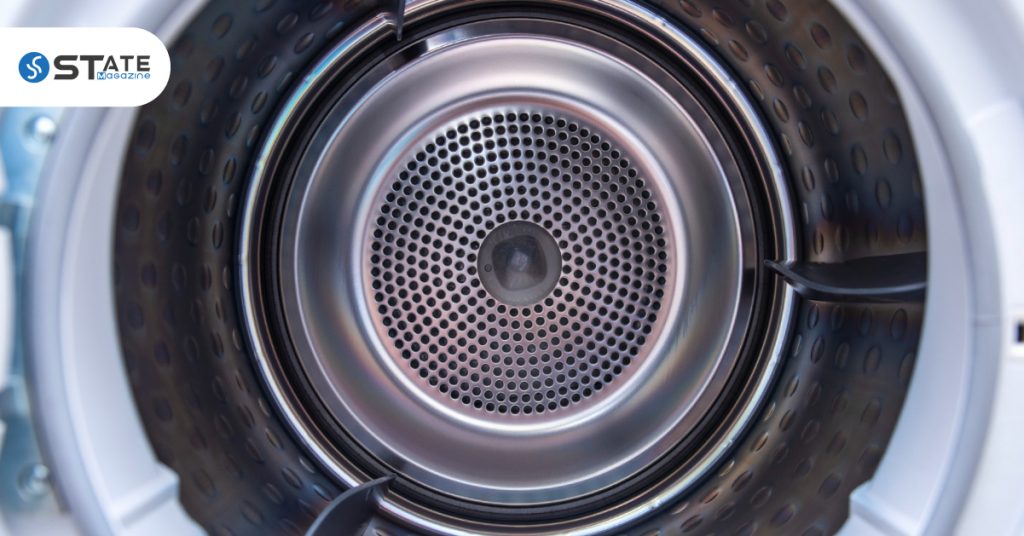
A washing machine repair is recommended only when the cost of repair is less than 50% of the price of a new washer. The drum replacement of a washing machine is very costly and might not be worth it most of the time. You can determine the cost of this repair by consulting the washing machine repair company. The average cost of washing machine drum replacement would be between $350 and $550.
It would be beneficial to repair the drum only if your washing machine is brand new and high-end. Sometimes, the replacement of drum bearings might also solve the issue. However, this is not an ordinary issue to be solved by a casual person. So you would have to precede this with professional guidance.
Frequently Asked Questions
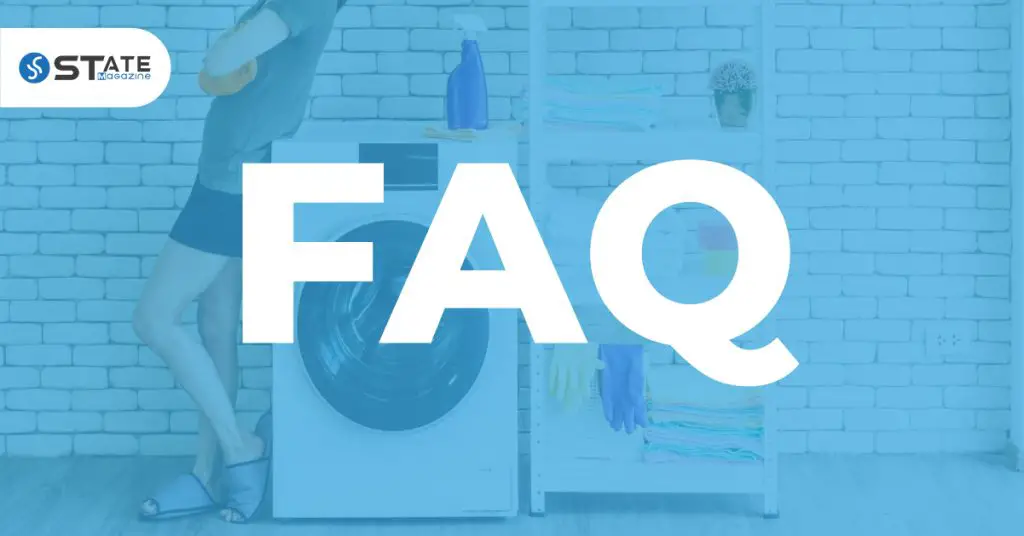
How much shaking is normal for a washer?
When the laundry load is properly balanced, the washing machine’s spin cycle continues and ramps up to maximum RPM with minimal vibration. It is normal to have a short pause and vibration when the washer spin cycle reaches approximately 400 RPM.
Do anti-vibration pads work washing machines?
Yes, the installation of anti-vibration pads under the washer and dryer is a very effective method of preventing vibration during operation.
Is there any other reason the washer would shake besides level?
The possible reason for this could be the suspension rods. You can replace them and check whether the issue is resolved.
Where are shipping bolts located?
These are located at the back of the washing machine and are usually larger than the bolts that hold the back cover. They would also have a rubber casing with bright colors. When removing, you would see that they are about 6 inches long.
Will the adjusting screws ruin when using a wrench?
Your screws can get stripped if the wrench slips. But it is the most practical method to adjust the screws in a machine.
What kind of lubricant or grease do I need for the inside of the shock absorber, and how do I refill it?
No grease or lubricant is needed inside the shock absorbers. Simply the replacement with new ones would do.
Conclusion
A shaky washing machine could lead to more damages to your washer and even to other appliances near it. This issue will even cause disturbance to your neighbors if you are living in an apartment. If a shaky washer is not attended to, it would even result in a completely broken state, and you would have to replace it with a new one. So it is always better to diagnose the possible causes and fix them before the problem gets off-hand and difficult to solve. If you are not experienced in appliance repair and fixing components, you should get the help of a technician.
If your washer has major issues, such as when it requires a drum replacement, it would be beneficial to buy a new washing machine. In that case, you should be aware of some Worst Washing Machine Brands in the market that should be avoided when purchasing. Additionally, there are also Worst Dishwashers and Refrigerator Brands to Avoid that you should know of when getting new household appliances.

